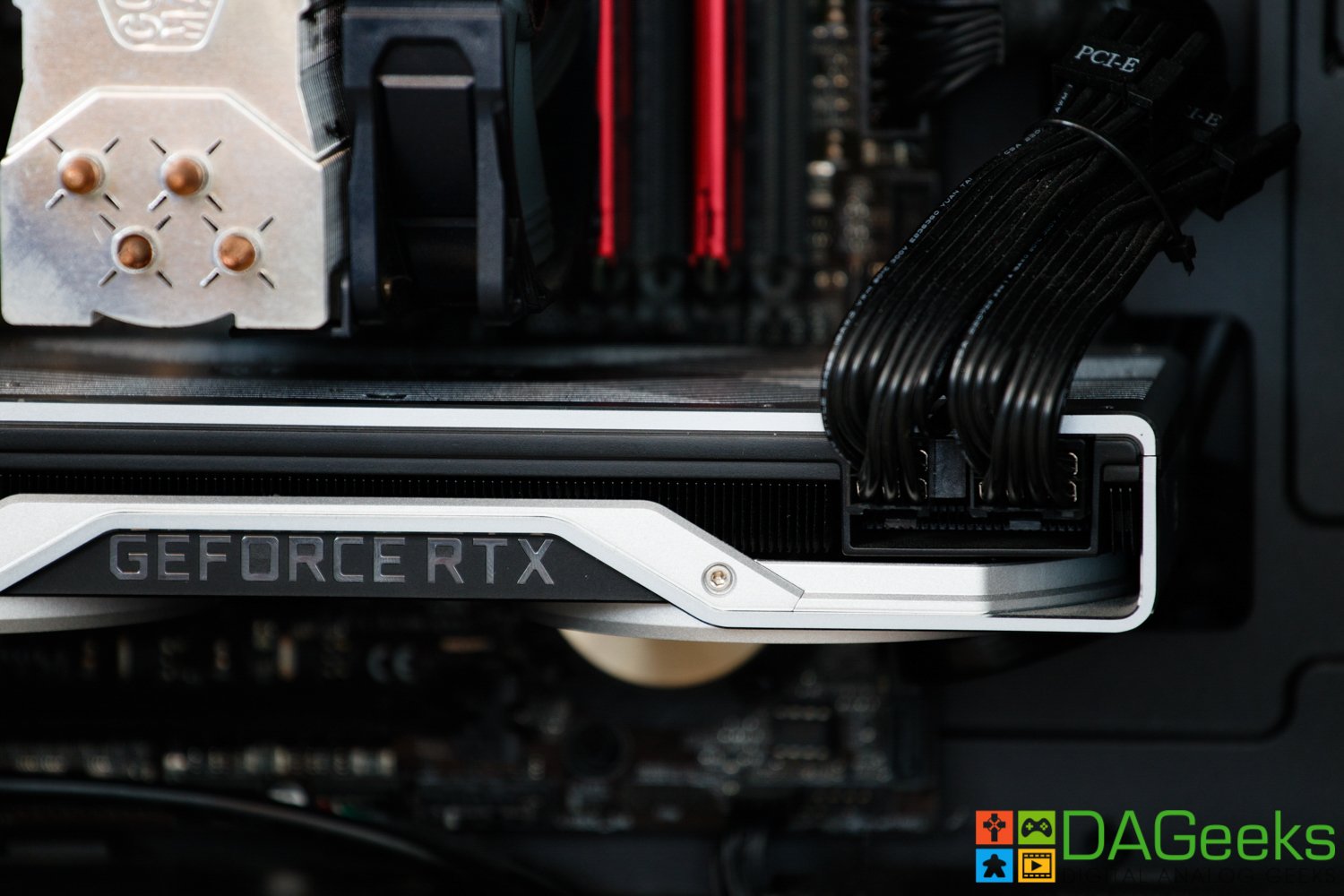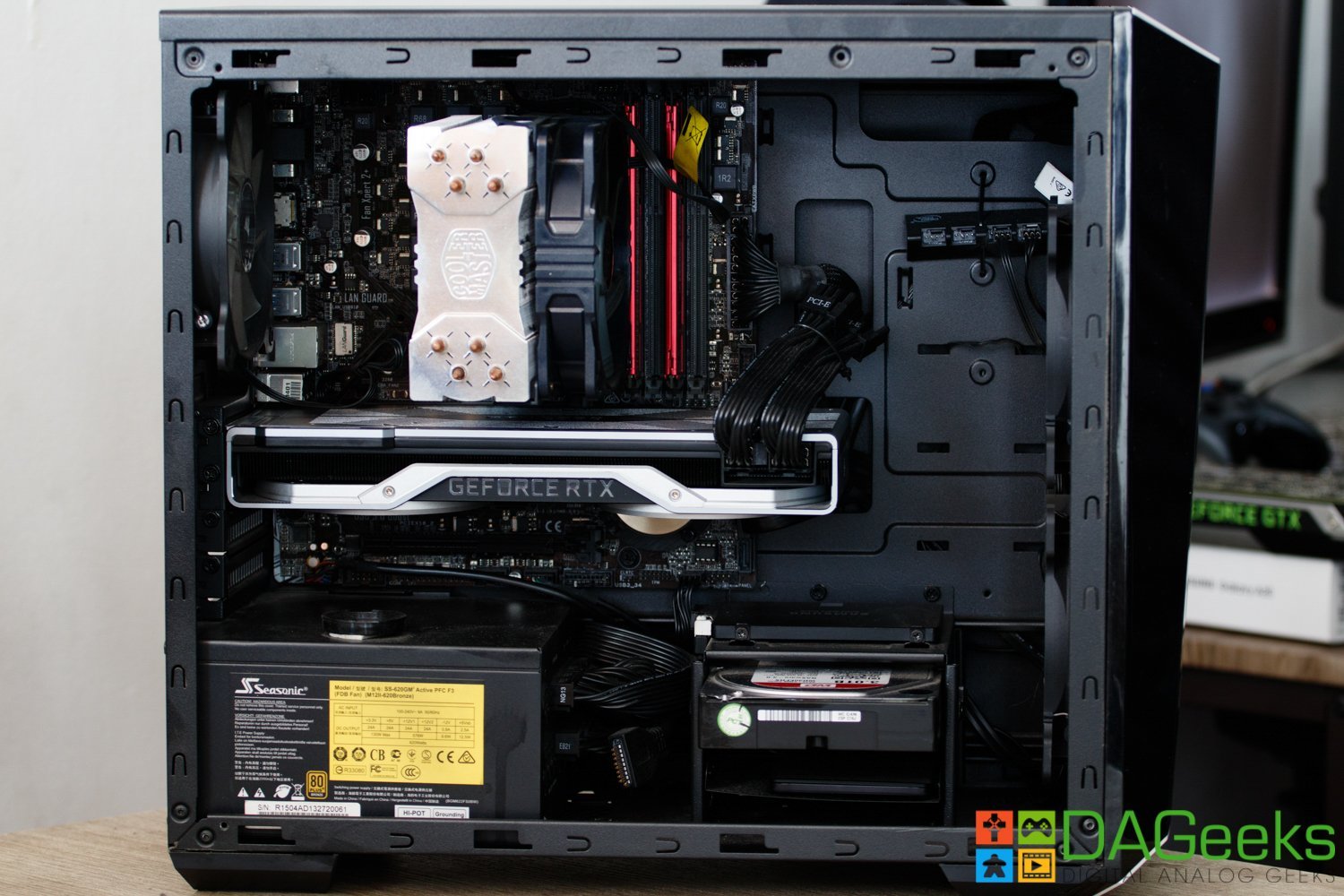The birth of a new generation.
The RTX 2080 has been out for quite some time now. The announcement was made around August 2018 and the first units arrived around September. There has been a great amount of anticipation that surrounded the launch of this generation as it has been almost 3 years since NVIDIA launched the Pascal-powered GTX 10 Series. The GeForce 20 series is based on the Turing microarchitecture and features real-time hardware ray-tracing, hence the change from GTX to RTX.

Is the 3-year wait worth it with what Turing brings to the table? In this article, we review the flagship’s little brother, the RTX 2080 Founder’s Edition.
The Turing TU104 GPU

The 2080 uses the TU104 which is a simplified version of the 2080 Ti’s TU102. It has a transistor count of 13.6 billion in its 545 mm2 die versus the TU102’s 18.6 billion transistors in a bigger 754 mm2 die. For reference, the 1080 Ti managed to have a transistor count of 12 billion with a 471 mm2 die. Another upgrade worth noting is that the Turing cards uses the new faster and more energy-efficient GDDR6 graphics memory. The previous generation’s GDDR5X could run 11 Gbps whereas GDDR6 can deliver up to 14 Gbps. The GeForce RTX 2080 is equipped with 8GB GDDR6 of graphics memory which runs at 14 Gbps. Getting deeper into the specs of the TU104 GPU, it has 2,944 active shader/stream cores, 368 tensor cores and 46 RT cores.

What truly makes the RTX 2080 a different beast is the fact that it features ray tracing cores. But what is ray tracing? Ray tracing is a rendering technique for generating an image by tracing the path of light as pixels in an image plane and simulating the effects of its encounters with virtual objects. If that sounds like how see images in real life, it’s because it is. In short, it emulates real-life environments and objects.
Design

It looks like a tabletop stove. Kidding aside, the dual-fan configuration of the Founder’s Edition really helped keep the card cool versus the single-fan blower style of previous FE cards. Looking behind the card, you’ll find 1 HDMI 2.0b slot, 3 DisplayPort slots and a VirtualLink connector for VR systems. Sadly, missing a dual-link DVI port, but if you have a recently-bought monitor, this shouldn’t be a problem. A quick note to check your monitor’s display capabilities for compatibility, especially if you want to maximize your experience in your high refresh rate monitor. Up top, you have the GEFORCE RTX writing with green LEDs, and then the 8-PIN and 6-PIN power connectors. Another tip before getting this card, make sure your PSU has enough wattage and correct cables to power the RTX 2080.
Performance

Now comes the meaty part. Apologies in advance as my system might be bottlenecking the RTX 2080, but it’s a good perspective to see how the RTX 2080 can carry the rest of my components in modern games. If you want to look for unhindered performance benchmarks, you can check other tech sites who run open air benches. The RTX 2080 launched 100 usd more expensive than its predecessor, the GTX 1080, but the difference in horsepower is palpable as the 2080 showed higher benches than the GTX 1080 Ti. You can check some of our benchmarks here: (Insert pics of benchmarks.)
Verdict

Ray-tracing is a nascent technology when it comes to the current games we have on the market today. At the time of this review, Quake II RTX, which is a re-release of the original game that fully uses NVIDIA’s ray-tracing technology, was not yet available. With the market getting saturated with GPUs from the mining craze, the price point of used GTX 1080 Tis are dropping, which will sure to entice budget-conscious enthusiasts. But with the next generation of games being developed with ray-tracing in mind, and not to mention the DLSS performance boost, the RTX 2080 is your key to that peace of mind that you don’t have to upgrade to play that upcoming next-generation game. While it’s true that ray-tracing was enabled for the 10 series cards, the series’ lack of RT cores makes us skeptic of how it will handle games using the technology.

We’re optimistic about the future of ray-tracing technology and AI in stepping up graphics performance, but if you’re the sort of person who loves to live in the now, you can find a cheaper 1080 Ti that will satisfy your current gaming needs with the current slate of games available. But if you’re looking for a beefy GPU but can’t afford the crème de la crème RTX 2080 Ti, the RTX 2080 is the top choice with all the bells and whistles of a high-end graphics card which will easily last you 3-4 years down the line before you might need to upgrade.
You can grab an RTX 2080 for around 35,000 php as of this writing.
Specs sheet
| NVIDIA CUDA Cores | 2944 |
| RTX-OPS | 60T |
| Giga Rays/s | 8 |
| Boost Clock | 1800 MHz (OC’d) |
| Base Clock | 1515 MHz |
| Memory Speed | 14 Gbps |
| Memory | 8GB GDDR6 |
| Interface Width | 256-bit |
| Memory Bandwidth | 448 GB/s |
| Ports | DisplayPort 1.4, HDMI 2.0b, USB Type-C |
| Dimensions | 115.7mm x 266.74mm |
| Maximum GPU Temp | 88C |
| TDP | 225W |
| Recommended System Power | 650W |
| Supplementary Power Connectors | 6pin + 8pin |






